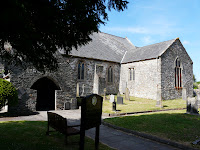



One of my sons has joined a battle re-enactment group, and last Sunday we went along to a place called Harthill, halway between Glasgow and Edinburgh.
I have been to similar events but usually these were from an earlier period, like Vikings, or Redcoats and Highlanders.
This event was from the First and Second World Wars.
There were guided tours if the trenches, built especially be the respective groups. There was a tank, should have been a replica WWII fighter, there was archery, Vikings even.
The weather was not the best, and it kept the crowds away.
My son is a member of group who portray a German army unit. I wonder how they had mock battles if there was not such a group?
All those involved put in a great deal of time and effort and money. They try as best they can to recreate what things would have been like at those times in History.
There were displays, and everyone was happy to answer questions. And the day ended with a mock battle between an American group -complete with tank- and a German group entrenched in their ditch.












 This Abbey was founded in the second half of the 12th Century by the Earl of Gloucester. It was a daughter house to Clairvaux Abbey.
This Abbey was founded in the second half of the 12th Century by the Earl of Gloucester. It was a daughter house to Clairvaux Abbey.










